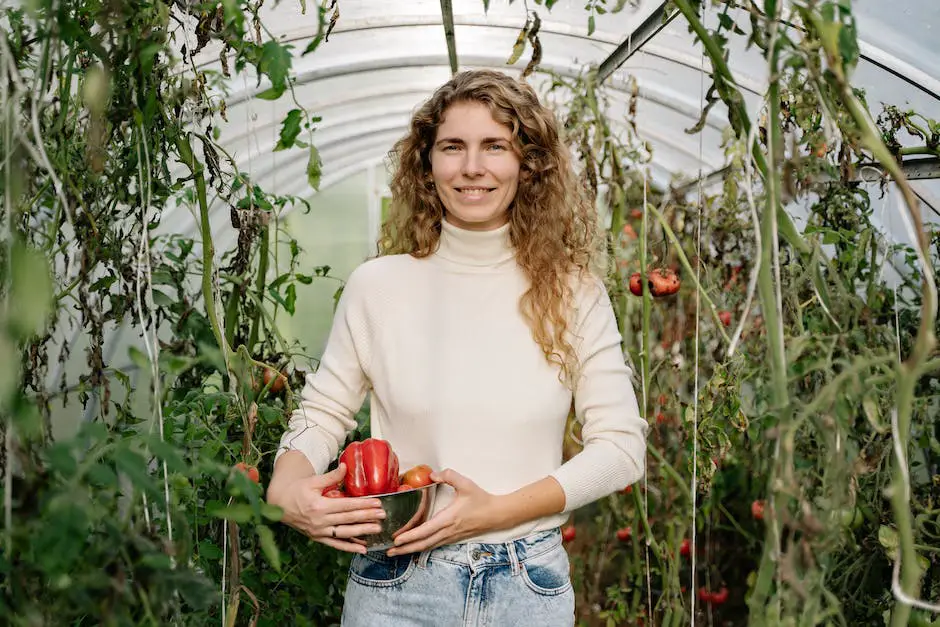Gardening is more than just a pastime; it’s a journey into the heart of nature that can enrich our lives in numerous ways. Whether you’re eager to transform your backyard into a verdant oasis or you’re simply looking for a delightful way to bond with family, understanding which vegetable plants to grow and where to find them is the first step in your horticultural adventure. In this exploration, we delve into the world of local plant nurseries, your go-to source for a bountiful selection of veggie starts that can set your garden up for success. We uncover the hallmarks of quality nurseries, from robust plant health to indispensable organic options, and how to tap into the collective wisdom of local gardening communities. Furthermore, we illuminate the joy and lifelong lessons that arise from gardening with children, a wholesome activity that can cultivate more than just edible delights.
Finding Local Plant Nurseries
Finding the perfect nursery that offers healthy, vibrant veggie plants can be like stumbling upon a hidden gem in your backyard.
Whether it’s for the satisfaction of homegrown salads or the joy of teaching little ones about where their food comes from, starting with the right plants is key to a bountiful harvest.
To unearth the best nurseries for those lively little veggie plants, start by tapping into the local gardening community.
Check out community boards, social media groups, or local gardening clubs, where seasoned garden enthusiasts gather and share their go-to spots.
These folks have been around the block or the garden bed, and their recommendations are worth their weight in ripened tomatoes!
Another surefire way to get the inside scoop is by visiting farmers’ markets.
The advantage here is twofold: not only do you get the freshest produce, but you can also chat directly with the growers themselves.
They often have the scoop on where to find the healthiest seedlings and might even sell some of their own.
For those who are after variety and the unique, local nurseries are often the way to go.
Unlike the big-box stores, these gems specialize in acclimatized plants that stand the best chance in your particular little slice of heaven.
A quick Google search for “best local nurseries” followed by a Saturday morning nursery hop can be both an enlightening and entertaining family affair.
Don’t forget to ask the nursery experts for their advice on soil, feeding, and care tips specific to their plants; it’s the kind of invaluable information that can really give a leg up to those burgeoning veggies.
Plus, supporting local businesses means strengthening not just the stems of your plants but the community as well.

Benefits of Gardening with Your Kids
Gardening with your kids isn’t just about making your yard look beautiful or growing your own tomatoes (even though that’s pretty awesome in itself). It’s a chance for your family to grow together, and here’s why it’s one of the greatest activities to share with your little sprouts. Let’s get our hands dirty with some real-life lessons!
Engaging children in gardening provides an unparalleled education in where food comes from and the effort involved in putting it on our plates. Up close and personal with Mother Nature, they learn about plant life cycles, insects, and the weather, all while developing an appreciation for the environment. Imagine the endless “aha!” moments as they discover how a seed germinates or the butterflies that are attracted to their flowers. They might even start understanding why those veggie portions on their plates merit as much excitement as a slice of pizza!
Beyond science, gardening cultivates responsibility and patience in young people. It’s about nurturing life, and that takes commitment, daily watering, weeding, and observing changes. These tasks help instill a sense of responsibility, as kids see their efforts reflected in the thriving greenery they tend to. There’s a deep satisfaction in watching a plant flourish because you remember to water it even on days when you just want to plop down in front of a screen. And let’s not forget the patience part. In our fast-paced world of instant gratification, waiting for those first sprouts or the fruit to ripen can feel like an eternity to a child, yet the outcome is so worth it. It’s a natural lesson in patience, where the sweetest rewards are those you’ve waited for.
So, grab some gloves, a couple of garden tools, and dive into the rewarding journey of gardening with your kids. Alongside the greenery you’re bound to grow, you’ll be planting the seeds of stewardship, curiosity, and connectivity with the earth, and that’s a harvest that lasts a lifetime.

Seasonal Veggie Plants Guide
When selecting the best vegetables to grow, considering each season’s offerings can make the difference between a thriving garden and a lackluster one. For those bright and breezy spring days, cool-season crops like lettuce, spinach, and peas are perfect. These veggies are hardy souls that can withstand those last, occasional frosty mornings, but they’ll also bask in the cool sunlight and take root nicely as the days begin to lengthen.
As the calendar marches into the sultry heat of summer, it’s time to switch gears and plant warmth-loving vegetables. Think of plump tomatoes, crunchy bell peppers, and even sweet corn. These sun worshippers need long days of light and consistent warmth to flourish, making them as eagerly anticipated as a scoop of ice cream on the Fourth of July.
When the sun starts to hang a little lower and the air smells of crisp leaves, autumn calls for a new round of cool-weather favorites. This is the time for planting root vegetables like carrots and beets, which snuggle into the cooling soil for a late-season harvest. Don’t forget those leafy greens, like kale and collards, either; they’re sturdy and can often survive the first frost, offering a harvest that extends well into the colder months. By tuning into nature’s rhythms and planting in harmony with the seasons, the garden won’t just be a source of food—it becomes a living, breathing lesson in the ebb and flow of life itself.

Easy-to-Grow Vegetables for Beginners
When it comes to selecting the top easy-to-grow veggie plants for beginner gardeners, it’s as much about choosing veggies that are forgiving as it is about sparking joy in the garden patch. Starting with leafy greens like lettuce and spinach is as wise as planting a row of marigolds These tender leaves seem to emerge with a little fuss and a whole lot of speed, making them perfect for eager little hands wanting to see quick results. Not only do they require minimal maintenance beyond regular watering, but they’re also some of the first plants to grace the dinner table, offering an almost immediate sense of accomplishment.
Tomatoes and bell peppers are next on the list, and for good reason. While they take a bit longer to mature than their leafy counterparts, the wait is absolutely worth it. These summer sunshine lovers are at the core of countless family recipes and practical lessons in the garden. They teach us the beauty of anticipation, and with a range of varieties, from heirlooms to hybrids, they cater to all taste preferences. Sweet corn, with its towering stalks, may require a bit more space but is a spectacular addition to any home garden, bringing drama and height to the layout and a fun twist to playtime—think home-grown hide and seek!
Lastly, don’t overlook the underground wonderland of root vegetables. Carrots and beets, with their buried treasures, fascinate with their hidden growth, providing an exciting surprise when uprooted. Alongside these, fall-friendly kale and collards extend the gardening season with their resilience to cooler temperatures. These leafy givers not only persist as the weather cools but tend to sweeten up after a frost, proving that sometimes challenges bring out the best flavors. All these vegetables, each with their own unique teaching moments and rewards, ensure a gardening experience that’s rich in lessons, flavors, and connections, nurturing stewardship and curiosity with every harvest.

Embarking on the path of gardening can foster a connection with nature that is as nourishing to the soul as it is to our bodies. As we navigate through the myriad joys and challenges of growing our own food, we find that the simplicity of planting a seed can blossom into a world of understanding and appreciation for the cycles of life. The garden becomes a living classroom for all ages, a place where patience, care, and the wonder of growth come together to create not just sustenance but memories that last a lifetime. By choosing the right vegetable plants for each season and by embracing the ease with which even novices can cultivate a thriving plot, we partake in an age-old tradition of nurturing the earth and, in turn, being nurtured by it. So let us continue to sow, grow, and share the bounty of our gardens, and in doing so, enrich our families, communities, and our own well-being in the process.




